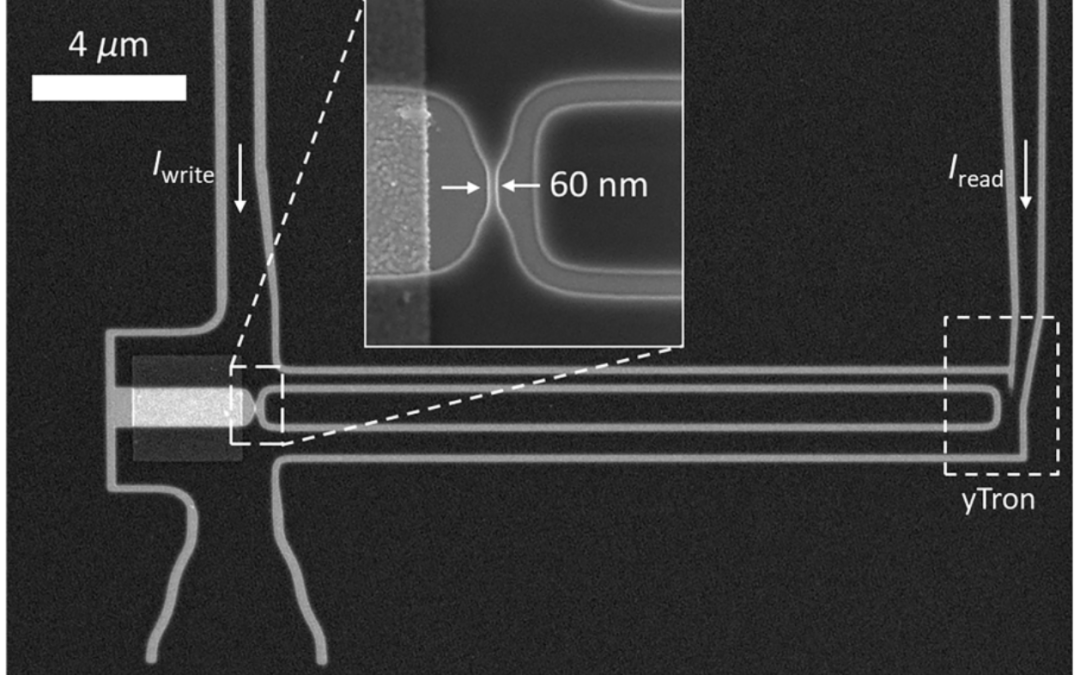The basis for superconducting electronics can broadly be divided between two technologies: the Josephson junction and the superconducting nanowire. While the Josephson junction (JJ) remains the dominant technology due to its high speed and low power dissipation, recently proposed nanowire devices offer improvements such as gain, high fanout, and compatibility with CMOS circuits. Despite these benefits, nanowire-based electronics have largely been limited to binary operations, with devices switching between the superconducting state and a high-impedance resistive state dominated by uncontrolled hotspot dynamics. Unlike the JJ, they cannot increment an output through successive switching and their operation speeds are limited by their slow thermal-reset times. Thus, there is a need for an intermediate device with the interfacing capabilities of a nanowire but a faster, moderated response allowing for modulation of the output. We present a nanowire device based on controlled fluxon transport. We show that the device is capable of responding proportionally to the strength of its input, unlike other nanowire technologies. The device can be operated to produce a multilevel output with distinguishable states, the number of which can be tuned by circuit parameters. Agreement between experimental results and electrothermal circuit simulations demonstrates that the device is classical and may be readily engineered for applications including use as a multilevel memory.
A complete description of the work may be found here.

